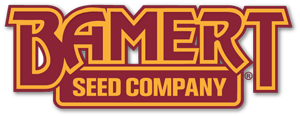Native Seed: FAQ
Answers to Your Most Common Native Seed Questions from Seed Experts
At Bamert, we have seven generations of experience growing, cleaning, and selling native seed. Below are answers to some commonly asked questions. If you don’t see an answer to your question here, don’t hesitate to reach out via our contact form.
One of our Reclamation Specialists would be happy to assist you.

Frequently Asked Questions About Reclamation Seed Blends
The question of how to plant your native seed blend is one of the most important and common questions we receive. To help guide you through the process, we have the following resources available:
Seeding rate refers to the amount of seed that needs to be planted. Usually, this is measured per square foot or per acre. Your recommended seeding rate is going to fluctuate depending on the species you are planting, the location of your project, and your project’s specs.
Seeding rate matters because an increased seeding rate is one of the easiest ways to increase the chances of a successful establishment.
Your local NRCS county office should be able to help any producer with seeding rate questions and offer a seeding rate spreadsheet for their county. You can also call our Reclamation Specialists to help determine the right seeding rate for your project.
PLS stands for Pure Live Seed. Pure Live Seed is the measure of live or viable seed in your order (in short, the seed most likely to germinate). PLS is determined when seeds are tested after harvest and cleaning.
Learn more about PLS in this blog post about Pure Live Seed by Bamert’s Director of Business Development, Rob Cook.
The best time to plant wildflowers is in the fall. Many wildflower species need to come up in the fall over winter and then really start growing in the spring to put on good flowers. If planted in the spring, wildflowers will germinate, but will probably not have big blooms. Here at Bamert, we always say, “For beautiful spring blooms, plant wildflower seeds in the fall.”
Learn more in this blog post about planting wildflowers.
Most native seeds will germinate in 10-14 days if they have been planted at the right depth and watered just enough to keep the soil damp (or planted with moisture).
Learn more about our native seed planting recommendations.
Native seeds will usually germinate in 10-14 days with proper soil bed preparation, planting, soil temperatures above 65 degrees Fahrenheit and adequate soil moisture. After the seedlings have germinated and an acceptable seedling density has been achieved, irrigation is usually not necessary
We recommend waiting at least a year before allowing grazing on your native grasses.
This is one of our favorite questions. The answer to which native seeds you need to plant is always that a custom seed blend works best. The species in your custom seed blend will vary based on your project’s goals, desired outcome, soil type(s), climate, and timing of your project.
You can request a quote for your custom seed blend, or call to talk with one of our Reclamation Specialists.
The best time to plant native seed depends on the type of natives you are planting. Cool-season grasses need to be planted in the fall. For most warm-season perennial grasses, we recommend planting in the spring once soil temperatures reach 65 degrees.
Our Reclamation Specialists can share some possible recommendations for renting the right equipment for planting native seed, such as a native seed drill, a drill seeder, or a broadcast seeder. Many local farm equipment retailers will have equipment available for rent as well.
Because we grow and clean our seed, we are able to create custom seed blends for our customers. Our Reclamation Specialists can help you identify the right blend to achieve your goals and meet the needs of your soil, climate, and region.
Unless recommended by a soil analysis, we do not recommend fertilizing when planting native seed. If phosphorus and potassium are recommended by the soil test they should be applied because they are important for root development, water use efficiency, and disease resistance.
If fertilizer is used, avoid high-nitrogen fertilizers that will promote weed competition. Learn more about when to fertilize during planting.
We do not deliver your custom seed blend. However, most orders placed before 3:00 pm CST will ship the next business day. We use FedEx for shipping and delivery.
Irrigation for native plants is not essential for stand establishment. Irrigation is often not possible or justifiable. Although, irrigation might speed up successful establishment. If you have irrigation available and plan to use it, use regular, light waterings until the seedlings are firmly established and start developing their secondary root systems. You want the ground to be moist, but you don’t want water pools or runoff during this process.
One of the biggest advantages of planting native grasses is that they are highly adapted to their region, climate, and soil. This means native grasses are usually much more drought-tolerant than introduced species.
Additionally, native grasses provide an essential ecosystem service of improving soil structure and increasing organic matter which improve infiltration and water holding capacity. Learn more about the drought tolerance of native grasses in this blog.
At this time, we do not accept returns for native seed purchases. In order to make sure you have the right blend for your project, we recommend calling our Reclamation Specialists or requesting a quote here.
